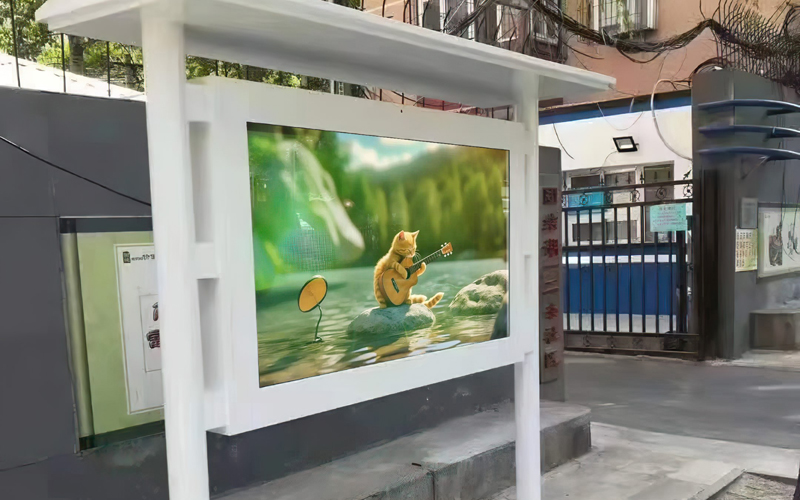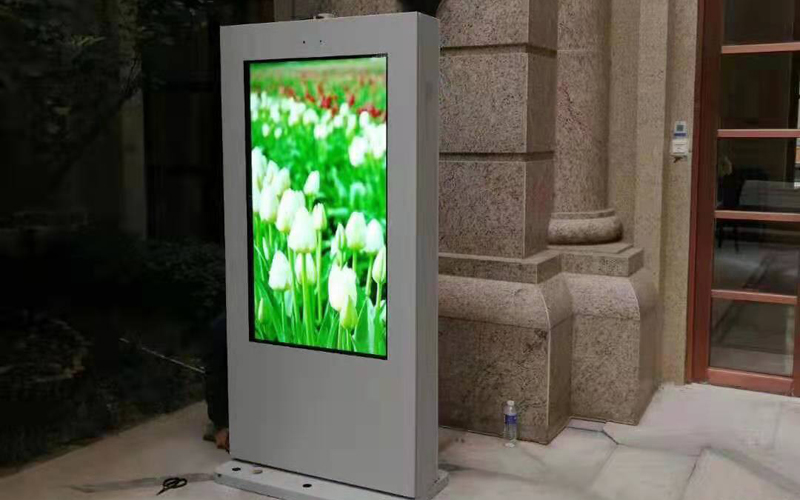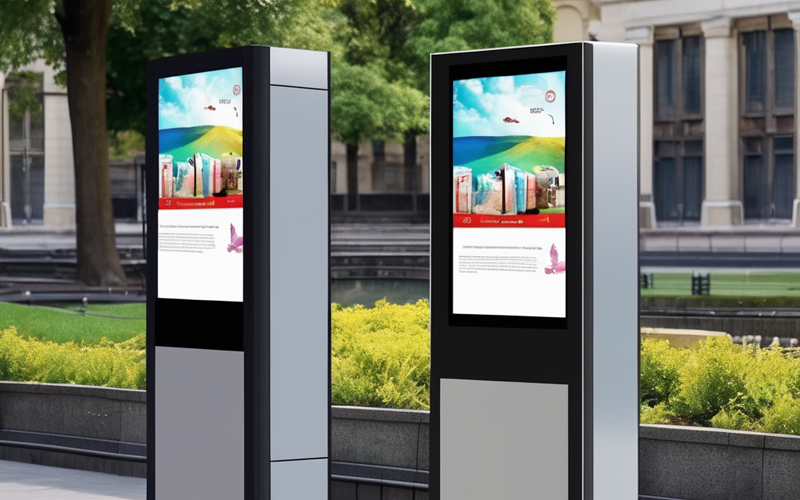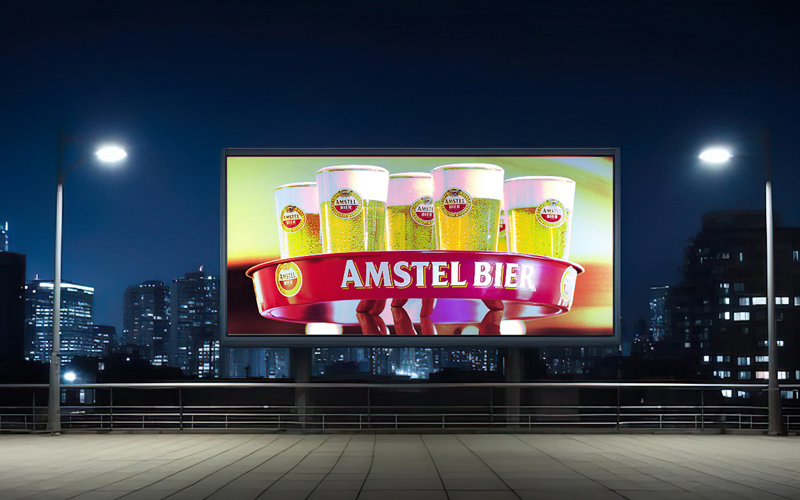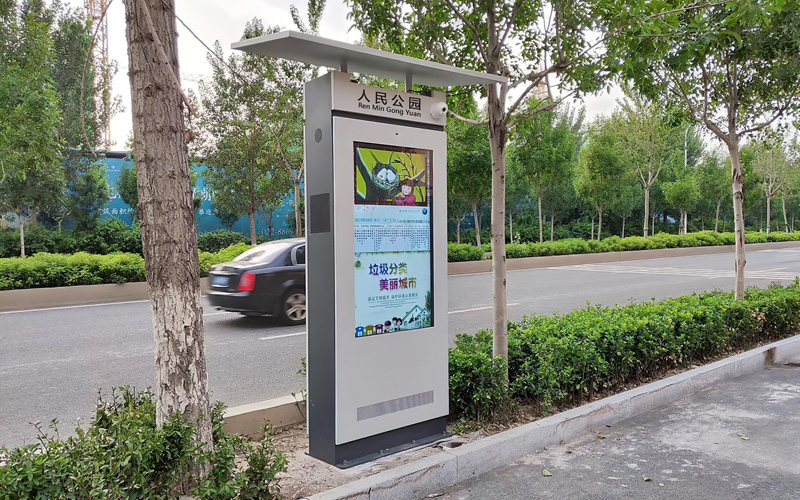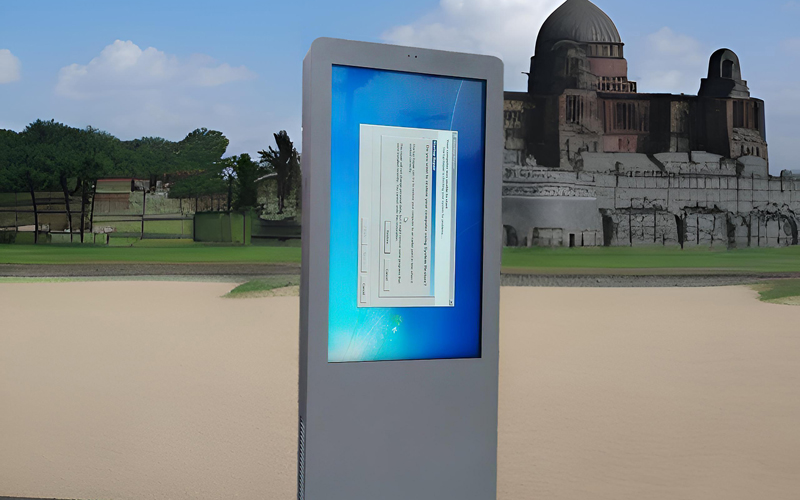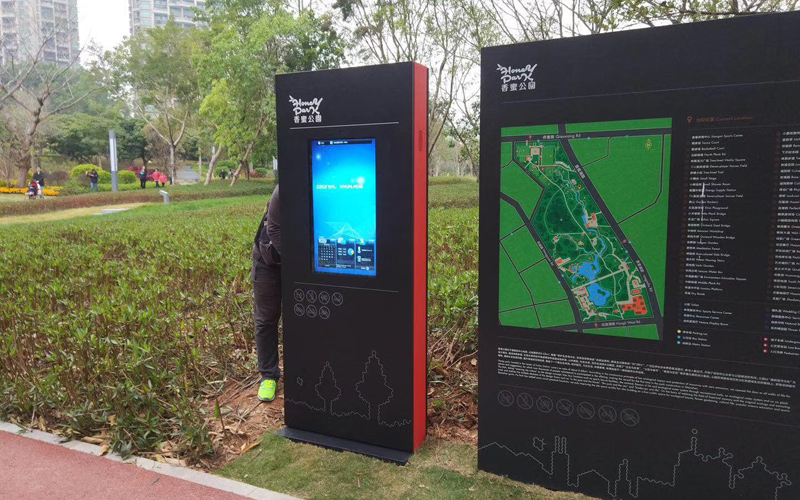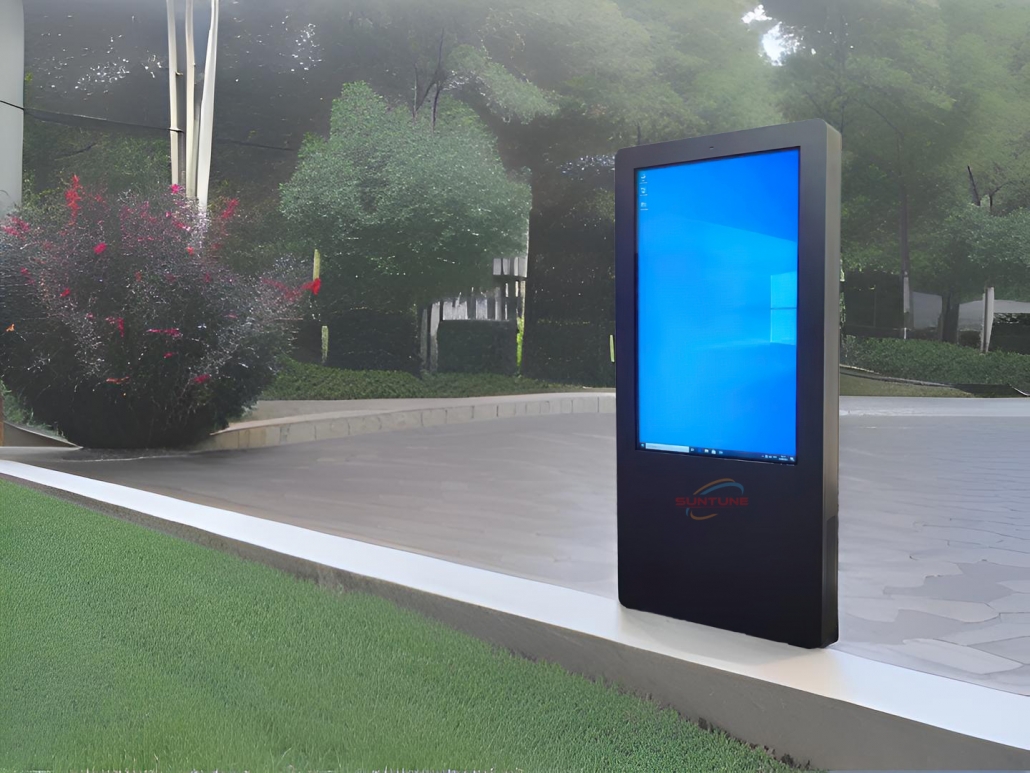In today’s fast-paced digital world, traditional static signage no longer cuts it when it comes to capturing the attention of your audience. To truly engage and captivate your viewers, you need to embrace the power of interactive digital signage. Immersive digital displays have the ability to create a unique and memorable experience for your audience, leaving a lasting impression that traditional forms of advertising simply cannot achieve.
The Power of Immersive Digital Displays
Immersive digital displays have revolutionized the way businesses interact with their customers. These interactive signages combine engaging visuals, compelling content, and user-friendly touchscreens to create an unforgettable experience. By incorporating dynamic elements such as videos, animations, and interactive games, immersive digital displays grab the attention of passersby and keep them engaged for longer periods of time.
One of the key advantages of immersive digital displays is their ability to deliver personalized and targeted content. By leveraging data analytics and customer insights, businesses can tailor their messaging to specific demographics, ensuring that their signage resonates with the intended audience. This level of personalization not only enhances the overall experience for viewers but also increases the effectiveness of the signage in achieving its goals.
Creating Engaging Interactive Signage
To create engaging interactive signage, it is crucial to consider the needs and preferences of your target audience. Start by understanding the demographics and characteristics of your viewers. Are they tech-savvy millennials or older, less digitally inclined individuals? By understanding your audience, you can design interactive signage that caters to their preferences and interests.
Another important aspect to consider is the location and context in which the signage will be displayed. Is it a high-traffic area or a more intimate setting? The design and content of your interactive signage should align with the environment in which it will be placed. For example, a busy shopping mall may require vibrant and attention-grabbing visuals, while a corporate office may benefit from a more sleek and professional design.
Crafting Captivating Touchscreen Content
The key to capturing and retaining the attention of your audience lies in the quality of your touchscreen content. It is essential to create content that is informative, engaging, and easy to navigate. Avoid cluttering the screen with excessive information or too many interactive elements. Instead, focus on delivering concise and visually appealing content that is easy for users to interact with.
Consider incorporating gamification elements into your touchscreen content. Gamification has proven to be a highly effective strategy for engaging users and increasing their level of interaction with signage. By adding interactive games, quizzes, or challenges, you can create a sense of excitement and encourage users to spend more time engaging with your signage.
User-Engaged Signage Solutions: The New Trend
User engagement is at the core of interactive digital signage. By creating a two-way communication channel with your audience, you can establish a deeper connection and build a more meaningful relationship. User-engaged signage solutions enable users to actively participate in the content, whether it’s through touchscreens, gesture recognition, or even facial recognition technology. This level of interactivity not only captures attention but also generates valuable data and insights that can be used to further refine and personalize your signage.
Entertaining Touchpoint Displays: A Guide
When it comes to interactive digital signage, entertainment is a powerful tool for capturing and retaining the attention of your audience. Entertaining touchpoint displays can include interactive games, virtual reality experiences, or even live streaming events. By providing entertainment value, you can create a memorable and enjoyable experience for viewers, increasing the likelihood that they will remember your brand and messaging.
Stimulating Digital Signage Design: Essential Tips
The design of your interactive digital signage plays a crucial role in capturing the attention of your audience. Here are some essential tips to create stimulating digital signage design:
1. Use bold and eye-catching visuals: Incorporate high-quality images and videos that grab attention and convey your message effectively.
2. Choose the right color scheme: Select colors that align with your brand identity and evoke the desired emotions from your audience.
3. Optimize for readability: Use clear and legible fonts that are easy to read, even from a distance.
4. Incorporate motion and animation: Dynamic visuals and animations can help create a sense of excitement and draw attention to your signage.
5. Test and iterate: Continuously monitor and evaluate the performance of your signage design. Collect feedback from users and make improvements based on their preferences and behaviors.
The Role Of User-Centric Interactive Displays
User-centric interactive displays put the needs and preferences of the user at the forefront. By designing signage that is intuitive, user-friendly, and tailored to the specific needs of your audience, you can create a seamless and enjoyable user experience. User-centric interactive displays should be easy to navigate, provide clear instructions, and offer a variety of interactive options to cater to different user preferences.
How to Develop Persuasive Touchscreen Content
Creating persuasive touchscreen content requires a deep understanding of your target audience and their motivations. Start by identifying the key messages and calls to action that you want to convey through your signage. Then, develop content that is compelling, informative, and relevant to your audience’s needs and interests.
To maximize the persuasiveness of your touchscreen content, consider incorporating social proof and testimonials. Highlight positive reviews, customer success stories, or endorsements from industry experts to build trust and credibility in your messaging. Additionally, use persuasive language and visuals to create a sense of urgency or exclusivity, encouraging users to take immediate action.
The Impact of Gamification in Signage Design
Gamification has become a popular technique in interactive signage design, and for good reason. By incorporating game-like elements into your signage, you can tap into the innate human desire for competition, achievement, and rewards. Gamification not only enhances user engagement but also encourages users to spend more time interacting with your signage, increasing the likelihood of achieving your desired objectives.
There are several ways to incorporate gamification into your signage design. Consider adding leaderboards, badges, or rewards for completing specific actions or achieving certain milestones. You can also design interactive games or challenges that require users to solve puzzles, answer trivia questions, or complete tasks. By making the experience fun and rewarding, you can create a positive association with your brand and messaging.
Interactive Storytelling Displays: The Future of Digital Signage
Storytelling has always been a powerful tool for capturing the attention and imagination of an audience. In the realm of interactive digital signage, storytelling takes on a whole new level of engagement. Interactive storytelling displays allow users to become active participants in the narrative, making choices and influencing the outcome of the story.
By creating interactive storytelling displays, you can create a memorable and immersive experience for your audience. Whether it’s through choose-your-own-adventure style narratives or interactive visual storytelling, this approach allows users to connect with your brand on a deeper level and creates a lasting impression.
Emotional Connection Signage: A Key to Audience Engagement
Emotional connection signage is all about tapping into the emotions of your audience to create a meaningful and memorable experience. By evoking emotions such as joy, surprise, nostalgia, or even empathy, you can establish a deeper connection with your viewers. Emotional connection signage can be achieved through compelling visuals, heartwarming stories, or even interactive elements that trigger emotional responses.
To create emotional connection signage, it is important to understand the emotions that resonate with your target audience. Conduct market research, gather customer insights, and test different approaches to determine which emotions are most effective in capturing the attention and engagement of your viewers.
Interactive Content Design Hacks Every Designer Should Know
Designing interactive content requires a unique set of skills and considerations. Here are some design hacks that every designer should know when creating interactive content:
1. Keep it simple: Avoid overwhelming users with too many interactive elements or complex navigation. Focus on simplicity and ease of use.
2. Use visual cues: Incorporate visual cues such as arrows, icons, or animations to guide users and indicate interactive elements.
3. Prioritize user feedback: Provide clear and immediate feedback to users when they interact with your signage. This can be in the form of visual cues, sound effects, or haptic feedback.
4. Test and iterate: Continuously test and iterate your interactive content design. Collect user feedback and make improvements based on their preferences and behaviors.
5. Leverage user-generated content: Encourage users to contribute their own content or participate in interactive activities. This not only increases engagement but also generates a sense of ownership and community.
Interactive Wayfinding Techniques: A Comprehensive Guide
Wayfinding is an essential aspect of interactive digital signage, particularly in large public spaces such as airports, shopping malls, or campuses. Interactive wayfinding techniques enable users to easily navigate and find their desired locations within a complex environment.
When designing interactive wayfinding signage, consider the following techniques:
1. Interactive maps: Incorporate interactive maps that allow users to zoom in, zoom out, and explore different areas of the location.
2. Search functionality: Provide a search feature that enables users to quickly find specific destinations or points of interest.
3. Real-time updates: Integrate real-time information such as wait times, traffic updates, or event schedules to help users make informed decisions.
4. Clear directions: Provide clear and concise directions, including visual cues and step-by-step instructions, to guide users to their desired destinations.
5. Accessibility features: Ensure that your interactive wayfinding signage is accessible to users with disabilities. This may include features such as voice-guided directions or alternative input methods.
The Importance of Feedback-Driven Digital Signage
Feedback-driven digital signage is a powerful tool for continuously improving the effectiveness of your interactive signage. By collecting and analyzing user feedback, you can gain valuable insights into user preferences, behaviors, and pain points. This feedback can then be used to make data-driven decisions and optimize your signage design and content.
There are several ways to collect feedback from users. One common approach is to incorporate surveys or feedback forms into your interactive signage. You can also leverage data analytics and user tracking tools to gather insights on user interactions and engagement levels. By regularly analyzing this feedback, you can identify areas for improvement and implement changes that enhance the overall user experience.
Captivating Your Audience with Interactive Digital Signage
In today’s digital age, capturing and retaining the attention of your audience is no easy feat. However, by embracing the power of immersive digital displays and creating engaging interactive signage, you can captivate your audience and leave a lasting impression. From crafting captivating touchscreen content to incorporating gamification and storytelling elements, there are numerous strategies and techniques you can employ to create a truly memorable and impactful experience for your viewers.
Remember, the key to successful interactive digital signage lies in understanding your audience, designing user-centric displays, and continuously seeking feedback to improve your signage over time. By following these tips and harnessing the power of interactive digital signage, you can effectively engage your audience and achieve your business goals.
Looking for high-quality interactive digital displays? SUNTUNE is a direct supplier of special displays, with well-equipped factory facilities and quality control systems. Contact SUNTUNE to explore the range of cutting-edge signage solutions.

